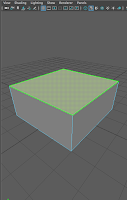End of Year Collection
Hello people of the internet! This is the last time I will be speaking to you all until I return from summer break. In this post I will be sharing all of the projects that I have created throughout this year. Many of these you might have seen in some of my earlier posts so don't be surprised if some of these look familiar.
If you remember my very first project of the year then you'll recognize this little fellow. His name is Kringle Claws and he was my practice project. He is my first humanoid creation in Maya and I do think that he could be improved. I mainly created him in order to get myself used to Maya after a long break.
This next project is probably my proudest work of the year. His name is Asger and he took way to long to create. I believe that he is my best work of the year and I think that the time I spent on him was well spent. I went for a more cartoony tone for him than I did with Kringle Claws. This decision to create a more cartoon like character was my smartest decision in the process of creating him.
The project that I did immediately after I finished Asger was very small. This hammer was a spur of the moment decision and did not take that long to make. It is meant to resemble Thor's hammer Mjolnir. I created it to go along with Asger and I think I successfully made it resemble the same style as our Viking friend.
This is my most recent project and it was made in response to a prompt given to us by my instructor Mr. Netterville. The prom was to create something that represented the passing of time. After a few days I settled on showing time pass using an ancient sundial. I created the strange shaped sundial by drawing what I wanted it to look like and using that image as a reference while I created it in Maya.
I created the shadow effect by creating a light in Maya and rotating it around the center of the model.








